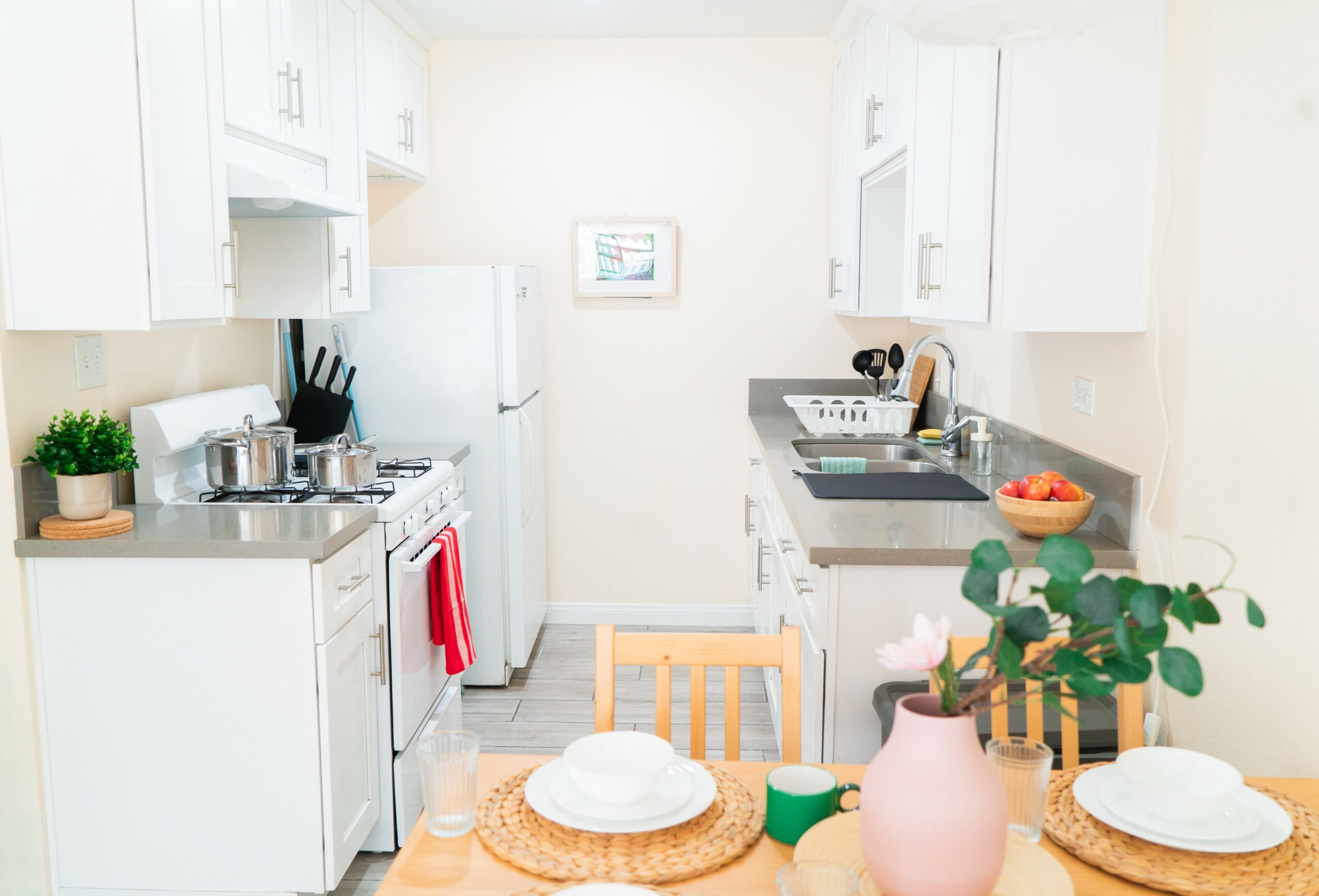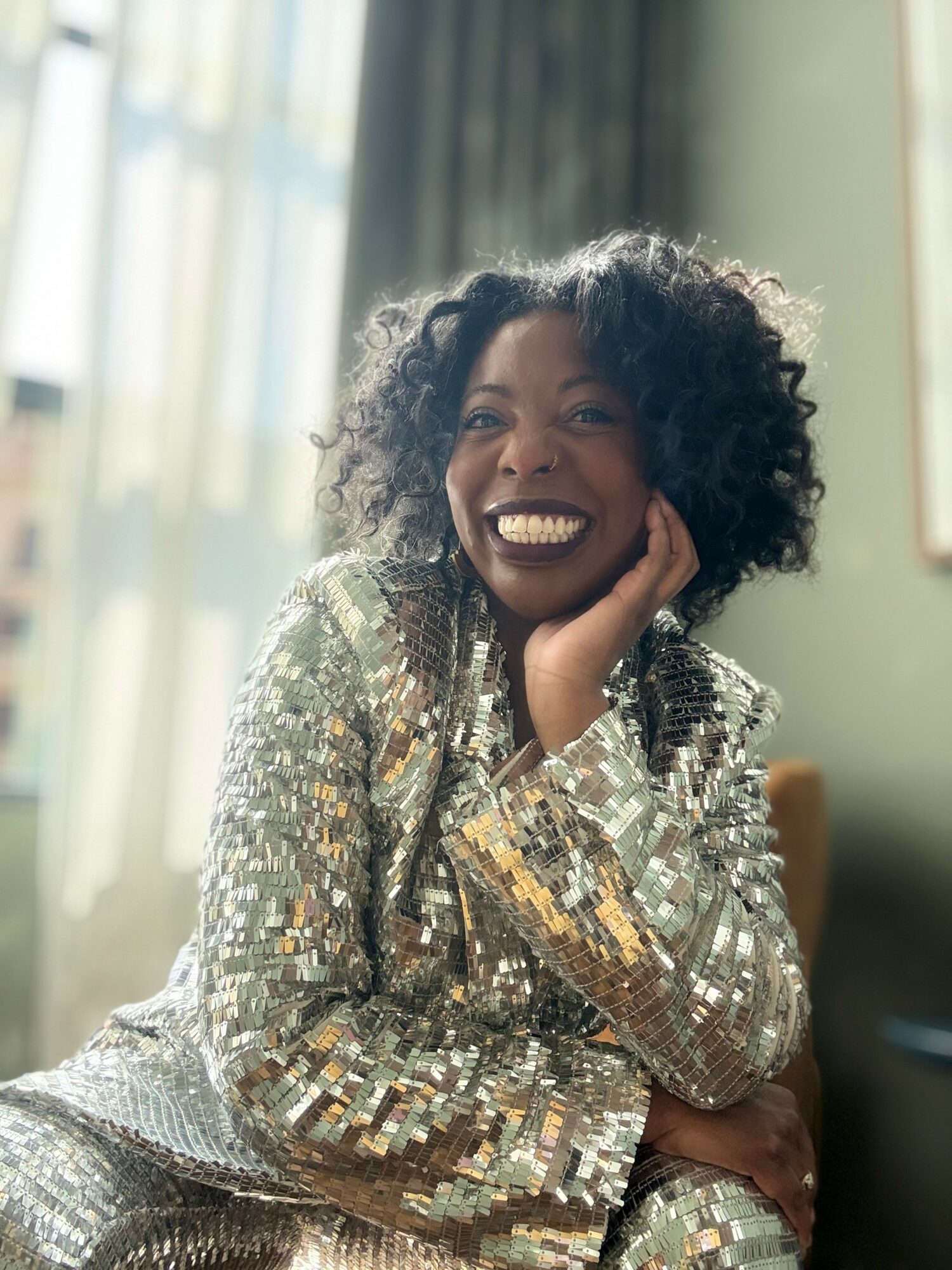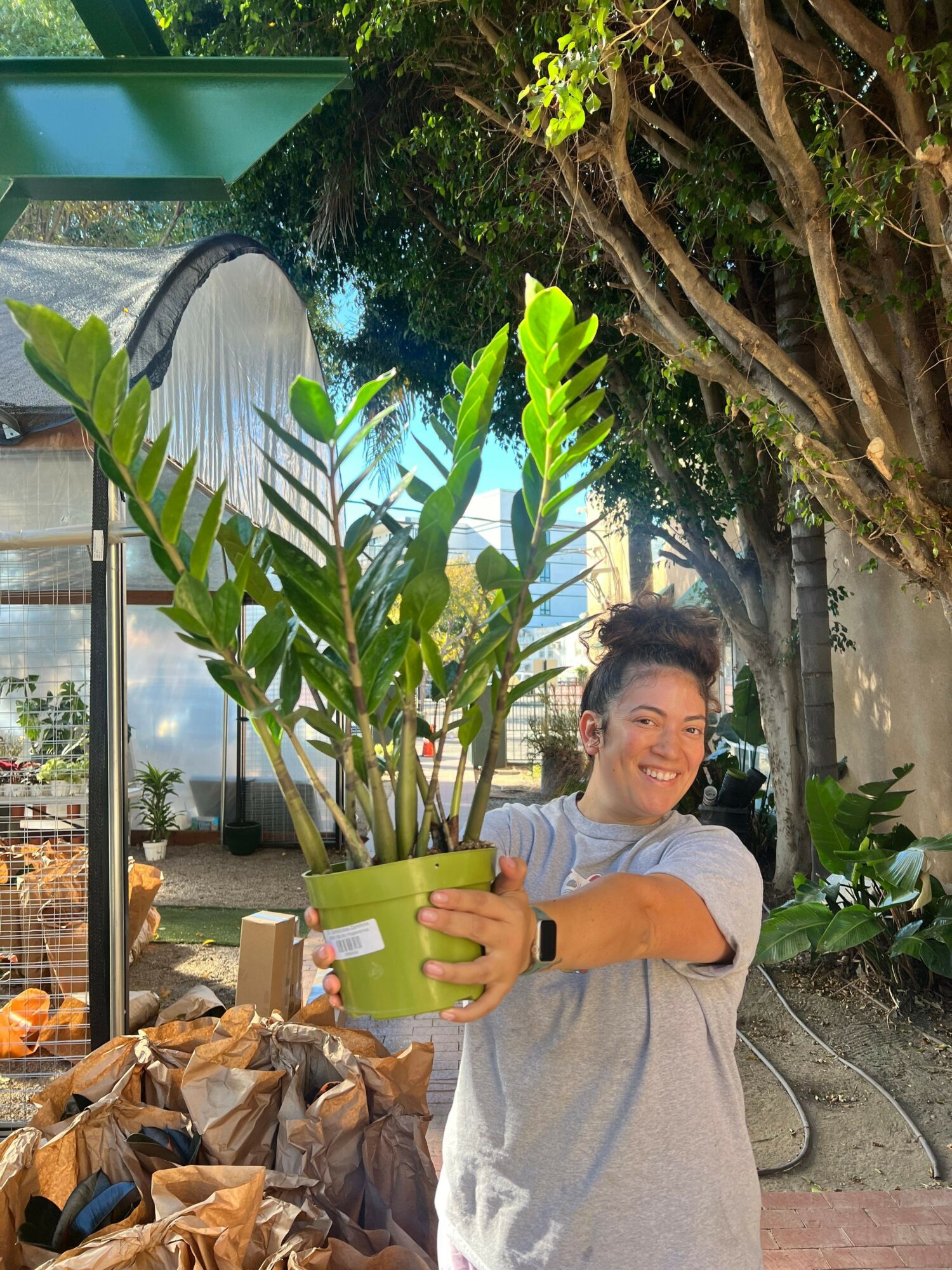

Today we’d like to introduce you to Tori Hobson.
Hi Tori, so excited to have you on the platform. So before we get into questions about your work-life, maybe you can bring our readers up to speed on your story and how you got to where you are today?
I grew up in a suburb in the I.E. (Inland Empire), just outside of Los Angeles. Most of my extended family was in the city—so we were always back and forth. I remember being little, riding in the backseat, and noticing neighbors who were unhoused near freeway exits. Even as a child, I felt this deep pull—like I see you, I care about you, even if I don’t have much to give right now aside from a smile. I understood early on that no one says “when I grow up- I dream of being unhoused.” I didn’t need to know everyone’s story to recognize their humanity. I’ve always been drawn to creating spaces where people feel seen, deeply appreciated, and safe to be completely themselves—where they feel honored and empowered to share their story on their own terms, if and when they choose. Because being seen is its own kind of homecoming.
So much of who I am via my deep care and commitment to creating change come from my stellar and otherworldly late mother, Sharon Hobson. After working for DCFS, she recognized how overloaded many social workers were and how that made it harder for children and families in foster care to receive the individualized attention and care that they truly deserved. Instead of accepting that as the norm, she and two of her colleagues, Jennifer Choctaw and Linda Kontis, decided to found Serenity Infant Care Homes, a private foster family agency that intentionally limited caseloads so the foster kids and families could receive the consistent, healing-centered support they needed.
My foundation and first experience with trauma-informed care was built in my late mother’s foster family agency, where growing up, I spent countless hours volunteering, particularly at the TLC (Therapeutic Learning Center), a preschool-like program for foster children who had experienced immense trauma. In understanding that each child had experienced different types of trauma and needed something uniquely tailored to them & that one size-fits-all hardly ever works in society,. Especially because we all come from different stories, backgrounds, and lived experiences. When people feel seen and provided with tools that meet their specific needs, that’s where I first witnessed how intentional, trauma-informed environments and equipping the children with the tools they needed helped them regulate themselves and feel safe enough to thrive. When I was fourteen, my mom and I volunteered for six weeks aboard the world’s largest non-governmental hospital ship off the coast of West Africa—it was definitely an eye-opening experience, especially as a selfish 14-year-old who didn’t initially want to go and leave her friends. But a few3 years after my mom passed, I was at a crossroads with what I wanted to pursue in life. That’s when my mom’s friend, who had lived onboard the hospital ship for years, mentioned it to me and suggested I consider coming back. I am not medical or in that field at all and can hardly even watch Grey’s Anatomy without getting squeamish, so learning that there were plenty of non-medical and supportive roles onboard to help the whole community run smoothly made me reconsider. Shortly after that, I ended up signing up to volunteer for two years with the same organization, almost ten years later from when I went with my mother. My favorite job and position during my time there was as a Hope Centre Coordinator managing pre- and post-op hospitality facility kind of like a hotel, but also more holistic, for patients who lived too far away for regular appointments and post-op care, helping to facilitate and tailor care for each patient—whether it be what type of meals, like soft food for those who had tumors removed from their face or mouth, etc., that we had cooked from a local chef, etc. Seeing people coming together across many languages, cultures, and circumstances to bring deep care to others, although some of it rooted in white saviorism with the organzation I was volunteering with, this really helped affirm my belief that healing is collective work that is built through empathy and systems that can honor one another’s humanity. Since then, my path has woven through serving as a board member of Rose of Sharon Children’s Foundation, working in childcare, a brief stint in tech as a CX professional, home staging, and almost a decade in aviation & traveling across the United States and internationally. These intersectional experiences traveling and working across diverse cultures and contexts deepened my integrative understanding of how safety, belonging, and healing are both universal needs and identity, & culturally specific. Years later, while living in Austin, I began volunteering at Community First! Village, a nonprofit and community of tiny homes and RVs for our formerly unhoused neighbors to transition into. While volunteering there, I met and befriended Dan*, the very first resident to move in. We had a housewarming party for him, and I decided to bring him a small plant and a letterpress card (because I have a full-blown letterpress and stationery obsession—it’s truly a thing). He was beyond ecstatic to receive this small plant and card. That small, joyful moment with Dan* really stayed with me and shifted everything. Once I got home from that housewarming, I started researching the power of plants and what I now know as trauma-informed design—the understanding of how our environments can either help regulate our nervous systems, nurture safety, and support long-term stability or potentially cause harm. When someone has something to care for and come home to—even a small plant—it can help rebuild grounding and connection. And as they too are nurtured and watch the plant grow, they in turn are being nurtured and growing too in the joy of watching something flourish—which is why we include one live plant that’s easy to care for in each Tori in the House home. Every time I returned to volunteer and see Dan*, he’d light up sharing how much his plant had grown and how he might need a new pot soon.
That’s where everything clicked and truly planted the seed—pun intended (I love the cheese)—for Tori in the House. A way to combine so many elements of what I loved and was passionate about: design and all things aesthetically pleasing, making people feel seen and at home, as well as healing and thriving. I’d always loved hosting, creating moments that made people feel special and cared for, evoking a certain feeling when they walked into a space. But here, it became so much more than aesthetics. It became about using design as a form of care—a way to help people regulate, rebuild, and truly feel safe again.
In 2024, I finally made this dream happen and founded Tori in the House, an LA-based nonprofit that “styles for stability” and “furnishes futures” via trauma-informed design to help end the cycle of homelessness. We collaborate with individuals and families transitioning into permanent supportive housing—co-creating homes that transform houses into spaces for healing. Through thoughtful trauma-informed design, we aim to foster independence, dignity, and serenity by providing new furniture and personalized, grounding environments that reduce stress, support regulation, increase housing retention, and help people feel grounded, seen, and empowered to thrive. As architect Sophia Novak says, “Healing of the body and mind cannot happen when the surroundings do not create a place that properly promotes it.”
We integrate this approach into every project, alongside a deep commitment to sustainability and dignity. One of our foundational practices is not accepting personal furniture or home-goods donations from the general public and only sourcing directly from retailers and homegoods and design stores. We prioritize open-box, lightly imperfect, and discontinued pieces that meet both sustainability standards and the dignity every person deserves.
While most people are beautifully well-intentioned, many of the items offered and donated are too worn or damaged to be reused. After disasters like the Altadena and Palisades fires, we saw mountains of donated items—most far past their prime to serve anyone. And the hard truth is, many nonprofits (ours included) simply don’t have the infrastructure to responsibly dispose of those items, which ultimately creates more waste.
When you’ve been through immense trauma and are trying to rebuild your life, being given broken or low-quality items can unintentionally mirror the message that you’re not worthy of better—and that deeply impacts self-worth. Dignity is a massive part of trauma-informed design, which is why it’s so important that our clients receive high-quality, well-crafted pieces that will carry them not just through this chapter, but into the next.
This approach isn’t just about aesthetics; it’s about dignity and restoration. Trauma-informed design is rooted in the understanding that the built environment plays a critical role in how people regulate, heal, and reconnect with safety. It’s about crafting spaces that minimize sensory triggers, encourage calm, and reflect each person’s story, identity, and culture—if they so choose to have it incorporated in any way. When someone walks into a home that feels like them—grounded, beautiful, and designed with intentionality and care—it affirms that they belong there & having a sense of self in one’s home along with community are some of the biggest factors that help keep folks housed long term. Every item we source reflects care, stability, and self-worth—reminding our clients that they deserve beauty, comfort, and longevity in their spaces, just like anyone else.
For many of our formerly unhoused neighbors, the transition into housing can be challenging,& receiving the keys to their new home is both thrilling and overwhelming. The process of securing permanent supportive housing can take months, sometimes even years. After moving in, many people sleep on air mattresses or the floor for months because furnishing a home is simply out of reach. And for those who do receive furniture, the space can still often feel cold or impersonal not reflective of their identity, journey, or spirit. The majority of unhoused neighbors in Los Angeles are members of the global majority, yet much of the most common interior design styles are very Eurocentric, can feel sterile and don’t truly reflect the identities, cultures, experiences & styles of the unhoused folks here & can feel colonial & disconnected from who they are. That’s why our designs are deeply identity-forward and culturally responsive & we honor all of that & more through color, texture, art, and story, etc. We’re also developing a trauma-informed “Stile Profile™” quiz, which is a tool that helps us identify each client’s sensory, emotional, abilities/disabilities and supportive needs, that helps gives us insight into what will help them feel grounded, regulated, and supported long term. By understanding what truly helps someone feel at home—whether it’s colors that soothe, objects that affirm, or supportive and adaptive tools, that honor their specific needs—we’re able to co-create homes with their direct input & help that directly address the trauma and disorientation of homelessness.
As researcher Dr. Jill Pable, founder of Design Resources for Homelessness, explains, “Trauma-informed design involves creating environments that affect people’s sense of identity and worth, their dignity and their empowerment.” The data shows that when someone lives in a space reflective of their identity and culture, housing retention rates rise significantly. Our Community Collective is one of my favorite aspects of bringing trauma-informed design to life. These collaborators are visionaries, curators, nurturers, and storytellers who play a vital role in helping us Style for Stability through identity and culturally rooted, trauma-informed tools. From Mayumi Goods and their diffuser essential oil scents that ground, to Octavia’s Bookshelf & Reparations Club providing books and stories that affirm and knowledge to empower (as we include seven books and one financial literacy book in each home), to Plant Chica for plants that nurture and help heal and cultivate independence and discipline, and art from primarily global majority artists and art books from Arcana and Pillar—whose founder Lorenzo Diggins Jr is also author of the stellar “Find Peace, Keep Peace” zine—we include one art book or coffee table book (another one of my obsessions) that evokes joy and inspiration for them and reflects identity and culture. And Maddy of Honey Hill Market helps source those special decorative items that make a place feel warm, personal, and like home. Altogether, these items help make a house feel like a home and give our formerly unhoused clients the tools they need to thrive. It’s that same energy I’ve brought into Tori in the House, where “Go Home Day” now means the day we install and officially “Furnish Futures” & make our “ Style For Stability” via Trauma Informed Design tangible—its the day our clients walk into their new home for the first time, .I carried the phrase “Go Home Day” and it stems from my previous aviation career—its what flight crews called that final day of a work trip. Via the flight crew- there was always this quiet joy and excitement in the air, that collective exhale of knowing you were finally heading home. Sometimes the pilots would hope for a tailwind or sometimes give it a little extra push to get us to our home base just a bit faster. the hope of no delays, the feeling of relief and anticipation all at once. the gratitude of finally being reunited with your space & the thought of sleeping in your own bed, being reunited with your community and people, your beloved pets, plants, or even just your favorite mug waiting for you for your coffee or tea the next morning. That’s the feeling we hope our clients experience—that deep sense of I’m finally home.
Via “Tori in the House”, and as my dear and brilliant friend Jen Garcia says “ When you feel at home, you stay at home” And that’s where healing—and thriving—can truly begin.
Alright, so let’s dig a little deeper into the story – has it been an easy path overall and if not, what were the challenges you’ve had to overcome?
Definitely not a smooth road—but a deeply meaningful one. Tori in the House has been so beautifully received, and I’m so endlessly grateful for that, but it’s also been full of lots of lessons and many a late nights. I don’t think people talk enough about how challenging that first year can be for a nonprofit—especially when it comes to funding. Particularly this past year with this current presidential administration & the rescinding of funds and such. Also a lot of grants and foundations understandably want to see your IRS 990s, which you don’t have yet when you’re just getting started. So it becomes this balance between building, sustaining, and dreaming, all at once.
I’ve been juggling all the things and keeping things moving and grooving as best as I can via community engagement, grant writing, picking up donations in a borrowed truck, nurturing relationships with potential Furnishing Futures Collaborators and donors, writing grants, keeping the day-to-day running, It’s a constant thing & a new challenge everyday honestly. There are a few incredible nonprofits here in LA doing similar work—like A Sense of Home, which primarily supports foster youth, and Flip 4 Good, which focuses on trauma-informed transitional housing—but I hadn’t seen anything quite like Tori in the House. Our approach is deeply collaborative. Clients co-create their home alongside us, leading with identity, culture, and voice. Every space is personal and dignified crafted with new or high-quality open-box furniture that honors both sustainability and self-worth.
There have absolutely been bumps and growing lessons along the way. We were generously offered and donated a warehouse space, as we had just received our first massive Furnishing Futures Collaborator & needed a warehouse stat to start facilitating donations. all we needed was an insurance policy to be able to move forward, but because we were so new and niche, we were denied multiple times. The few quotes we received were beyond astronomical and because we had such tight funding and we ultimately lost the space & our first official Furnsihing Futures Colloboration as well. Those moments really sucked and were a true bummer in the summer. But they also taught me so much about building strong foundations, pacing growth, and protecting the sustainability of our nonprofit .
During this time, I completed a Nonprofit Resilient Leadership course at USC, earned my Trauma-Informed Design credential from Boston Architectural College, and graduated from an Entrepreneurship Program with VSEDC. Each program shifted how I think about what it means to grow intentionally. That’s why we’re currently pausing new client projects—so we can strengthen our infrastructure and give every future client, staff member, funder, and Furnishing Futures Collaborator the best chance to thrive. I want us to be grounded, ready, and sustainable for the long haul.
Right now, we’re recruiting new board members, finalizing the Stile Profile™ (our trauma-informed design assessment tool), and working toward securing sustainable transportation & then a warehouse space & more Furnishing Future Collaborations with retailers. My dream is to eventually purchase or receive a donated Chevrolet BrightDrop 600—it’s the perfect size for what we do and aligns with our commitment to sustainability.
The LA community has shown up in such an otherworldly way. & the kindness has truly blown me away. . Plant Chica in Leimert Park donated a plant for our very first client. IKEA and Poly & Bark Outlet went above and beyond—helping us fully furnish her home just two and a half weeks after our first meeting, months earlier than expected. Later on, Counterspace donated décor and home items that helped us add warmth and personality to future spaces. And our two incredible interns helped bring the Stile Profile™ to life, creating a nearly complete version that’s going to help us design even more intentionally moving forward.
If I’m being honest, keeping up with social media and newsletters for our Collaborators and donors has been a real challenge. I genuinely want our community to feel seen and know what’s happening—but between fundraising, grants, operations, and board planning, sometimes there just aren’t enough hours in the day. But that connection matters so much to me, as People are investing in Tori in the House, and they deserve to know where we’re headed and how they’re part of making it happen.
I know that someday I’ll look back on this season, all the building, the learning, the scrappy problem-solving, with a full heart. Every single challenge right now is shaping the foundation for something stunning & sustainable. & my favorite part is the collaboration of it all with the community’s help with the donors, Community Collective, Furnishing Futures Collaboarors etc. Something rooted in joy, dignity, and design, as well as helping to end the cycle of homelessness and helps people finally feel at home.
Thanks – so what else should our readers know about Tori in the House?
Tori in the House is an LA-based nonprofit and 501(c)(3) that works with folks transitioning out of homelessness & into permanent supportive housing. We “Style For Stability” & “ Furnish Futures” to help turn houses into homes through trauma-informed design, we furnish each home and create spaces that genuinely reflect each client’s identity, culture, and story. our blueprint at Tori in the House via our commitment to equity, compassion, empowerment, community, stability, and sustainability really help shape each and every decision we make.
What really sets us apart is that we don’t just drop off furniture and leave. We collaborate closely with our clients, co-creating spaces that are intentional and empowering. Every rug, plant, chair, or piece of art is chosen to support dignity, grounding, and ownership. When clients walk into their new homes, they immediately feel a sense of belonging and stability—and that matters so much. We prioritize new, open-box, or lightly imperfect furniture from retailers, not only to reduce waste and help avert millions of tons of furniture ending up in landfills each year, but also to ensure the items we provide will last. Our clients deserve quality that carries them forward, not hand-me-downs that feel temporary.
We have a more holistic approach that goes way beyond furniture. Kitchens are stocked with healthy staples, practical tools, and adaptive cooking gear, helping clients of all abilities and disabilities, feel capable and supported in the everyday ways that make life in a new home manageable and empowering. And honestly, it doesn’t stop at move-in. After what we lovingly call “Go Home Day,” when we fully install and furnish a client’s space, we stay connected for a full 12 months, checking in to see how the home is supporting them and offering additional support if we can whenever they need it. Collaboration, choice, and voice are central to Trauma Informed Design & everything we do & it gives clients agency over their space and reinforces their ownership of this new chapter. Our work combines trauma-informed design with sustainability and dignity, because it’s not just about making a space look pretty it’s about giving people a foundation to heal, reclaim their lives, and feel truly grounded & start to dream big again.
I’m especially proud of the Stile Profile™, a trauma-informed tool & quiz we’re building to understand each client’s preferences for textures, colors, materials, and design elements that will help stabilize and empower them. This approach centers global majority interior design styles and identity-forward design principles in a way I haven’t seen anywhere else. It means each home truly reflects the person living in it & their needs.
Alright, so to wrap up, is there anything else you’d like to share with us?
I will also be launching my work as a Trauma Informed Design Consultant in early 2026 as well to collaborate with builders, schools, etc.
I want Tori in the House & Trauma Informed Design to become the new standard and not be seen as a niche or out of the box organization- because everyone deserves quality top notch, care, and dignity in their space. For far too long, we’ve overlooked and dehumanized our neighbors experiencing homelessness, and we really want to shift that in whatever way we can. Through art, music, and thoughtful Trauma Informed Design, we co-create spaces that invite connection, comfort, and expression, it’s a blueprint for trauma-informed, sustainable housing that can be replicated across communities, offering stability, empowerment, and healing for people transitioning from homelessness.
What we’re co-creating with Tori in the House is a blueprint for trauma-informed, sustainable housing that can be scaled to give people stability, safety, and the tools to thrive. We’re always exploring collaborations with furniture retailers, designers, home goods brands, lighting and electronics collaborators, appliance brands like vacuums, bath and beauty companies, hair care brands, grocers, food kit organizations, and community organizations who share our commitment to dignity, sustainability, and empowerment. Early 2026- we will be seeking warehouse space and a donated or funded Chevrolet BrightDrop 600 to support our delivery and donation logistics.
Every Collaboration, whether it’s providing cleaning supplies, cooking essentials, our signature housewarming baskets, & the cute little touches like a handwritten welcome card, all helps us Furnish Futures and Style for Stability. We celebrate every Furnishing Futures Collaborator on our website and in our storytelling so their generosity and impact are truly visible.
We’d love for you to Join the NeighborGood—by signing up for our newsletter and following along on social media, volunteering with us to help “Furnish Futures” when we relaunch in spring/early summer, becoming a monthly donor, or finding another way to support. It would bring us all the joy to have you as part of the NeighborGood!
Contact Info:
- Website: https://www.toriinthehouse.org/
- Instagram: https://www.instagram.com/tori_in.the_house
- Facebook: https://www.facebook.com/profile.php?id=61570366861825
- LinkedIn: https://www.linkedin.com/in/tori-hobson-tid-b-6364bb90/
- Other: https://www.tidsociety.com/profile/my/profile







Image Credits
DORIAN by Karen Vallejo- http://dorianph.com/ , Ant Farm Studios. Los Angeles, CA. Founded By Isaac J. Burt,














